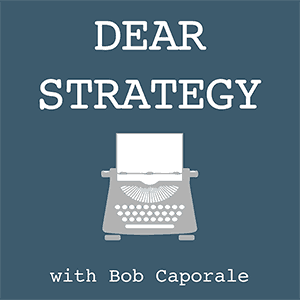Dear Strategy:
“What metrics can we use besides P&L to drive strategy in a service business?”
It’s interesting that this question is being asked in relation to a service business because it’s true that a P&L can be less accurate for a service business than for a tangible product business – at least at the product line level.
At its core, a P&L is an evaluation of revenue, cost, expenses, and overall profit for a given business or product line. For tangible products, revenues and costs are usually well-known, which means that the P&L is usually fairly accurate down to a Gross Profit level. Overall operating expenses, on the other hand, are usually spread out, and therefore allocated, across a number of different product lines –making overall net profit difficult to assess on a product by product basis.
For a service business, revenue is usually fairly well-known down to a product level. But things can get pretty tricky at the cost level. The reason is that product costs for a service business usually consist of some combination of project and resource costs, many of which will be allocated across a number of different products (much like operating expenses, which are also allocated for service business as well). And although some service businesses do have a fairly accurate picture of which costs apply to which services, it is rarely as straightforward as it is for tangible products where you have a direct application of labor and material on a per unit basis.
It’s not surprising, then, that the P&L will not be the only, and sometimes not even the best, gauge of strategic success for product businesses, particularly in the service arena.
Fortunately, there are literally hundreds of other metrics and KPIs (Key Performance Indicators) that you can choose from to form your strategic objectives. And although some form of revenue and profit will inevitably be among them, you should also consider establishing some other objectives against which you can track the performance of your strategy. And, luckily, with so many metrics to choose from, there is a fairly well-known methodology that has been established to organize yourself along the way.
The Balanced Scorecard methodology was first introduced by Robert Kaplan and David Norton in their book of the same name. What it calls for is for companies to choose metrics in four basic categories as follows:
- Financial
- Customer
- Internal Processes
- Learning & Growth
The idea is to develop your strategic objectives and track the effectiveness of the actions that are tied to these objectives, ultimately providing you with goals and related metrics that are not just financially based.
And although this framework has been debated, modified, and evolved over the years, The Balanced Scorecard remains a tried and true methodology to track the progress of just about any type of product business – service-based or otherwise.
Listen to the podcast episode
Dear Strategy: Episode 032

###
Bob Caporale is the author of Creative Strategy Generation and the host of the Dear Strategy podcast. You can learn more about his work by visiting bobcaporale.com.





